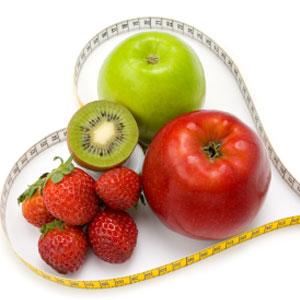
Losing weight sounds so simple, yet most of us have tried and failed.
Research has shown that for some, having clear guidelines about what to eat, when, can work wonders in losing the extra kilos, and keeping them off.
While the current Banting diet, or high fat, low carb diet, as well as Atkins and other high protein diets are popular, science is divided between who loses more - those on high fat/protein diets or those on low-fat diets.
If you tried Banting and got bored, or piled the kilos back on as soon as you ate a slice of bread, maybe the diet is not for you.
Try this version of a balanced, low-fat diet to see if it works better.
If you are still struggling to lose weight, pop a question to our DietDoc who is available all week to answer your specific diet questions.
Do these diet knowledge tests:
Am I ready for weightloss (it's all in the mind, after all)
Test yourself to see if you are insulin resistant
A little sugar is totally harmless, but are you eating too much?
Is your diet doomed to failure?Diet tips
- Eat these low-fat foods in moderation and the fat cells will start to disappear.
- Cut down on alcohol intake to save on kilojoules and lose weight fast. Stick to one glass of red wine or whisky per day.
- Always read food labels to check how much fat a specific product contains.
Basic diet plan
| Breakfast |
OR
Tea, coffee, or cocoa with ¼ cup of low-fat milk Variations |
| Lunch |
2 servings of meat/cheese
1 serving of vegetables
1 serving of fruit
Tea or coffee with ¼ cup of low-fat milk OR 1 glass of fruit juice Variations |
| Supper | 2 servings of meat/cheese
2 servings of starch
2 vegetables
2 teaspoons of fat
1 fruit
Tea, coffee or cocoa with ¼ cup of low-fat milk |
Low-fat diet recommendations
- Skimmed milk, and milk products, e.g. yoghurt and cottage cheese made from skimmed milk.
- Low-fat cheese, e.g. mozzarella, edam and tilsiter.
- Unrefined cereals, e.g. whole-wheat, brown or rye bread, brown rice, unrefined maize meal, bran-rich breakfast cereals, oats, maltabella, crisp breads, pasta (spaghetti, macaroni, noodles).
- Fresh and preferably raw fruit and vegetables, canned or frozen vegetables, dried fruit.
- Boiled or poached eggs, restrict to 4 per week.
- Small portions of meat, chicken or fish with all the visible fat cut off and prepared by grilling, steaming or pan baking without added fat.
- Legumes, e.g. cooked dry beans, peas, lentils and vegetable protein meat replacers, e.g. Toppers.
- 2 tablespoons of fat-reduced margarine with a high polyunsaturated fatty acid content, or sunflower, avocado or canola oil, or low-oil dressing.
Foods to avoid
- Processed foods: read the labels and see how much fat they contain.
- Food preparation methods that add fat to food, like frying. Sauces made from meat drippings and commercial dressings made with oil and eggs, e.g. mayonnaise (use low-oil dressings).
- Processed meats such as polony, ham, bacon, sausages, pies and sausage rolls (use reduced fat meat products).
- Cakes, pastries, biscuits, doughnuts, refined rusks and chocolate.
- Hard or high-fat cheeses, e.g. gouda, cheddar, camembert and parmesan.
- Full-cream milk products, ice cream and commercial puddings.
- Coffee creamers, milk blends, cream, suet, lard.
Exercise
Burn up more energy by starting to exercise, but just check with your doctor first if you can participate in an exercise programme.
Regular brisk walking/running in the fresh air is probably the most pleasant and healthy form of exercise. Start gradually and increase how long and how actively you walk or run over a period of time. Enjoy.
If you prefer working out, or doing aerobics, join a good gym.
Regular swimming, cycling, tennis and squash are also excellent ways of increasing your energy output and firming the body.




 Publications
Publications
 Partners
Partners














